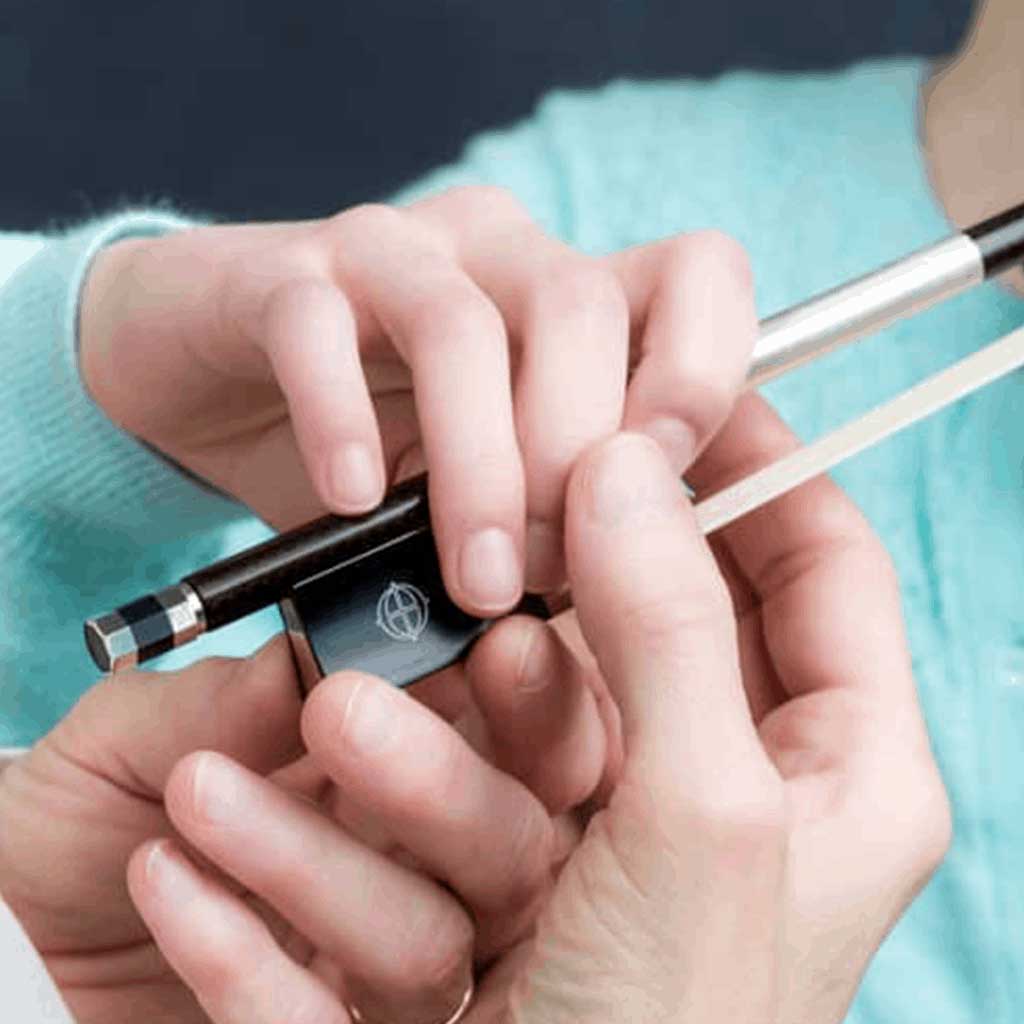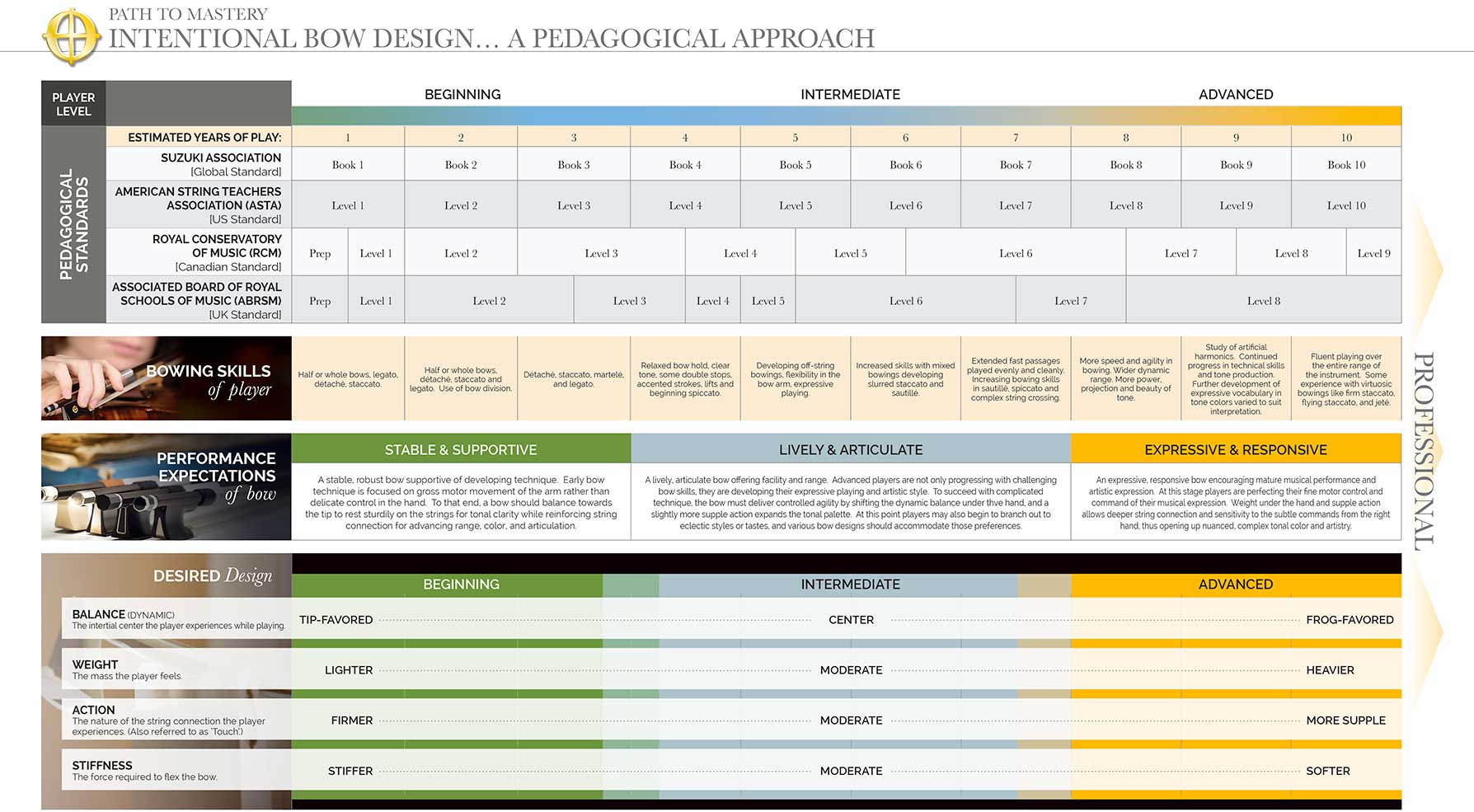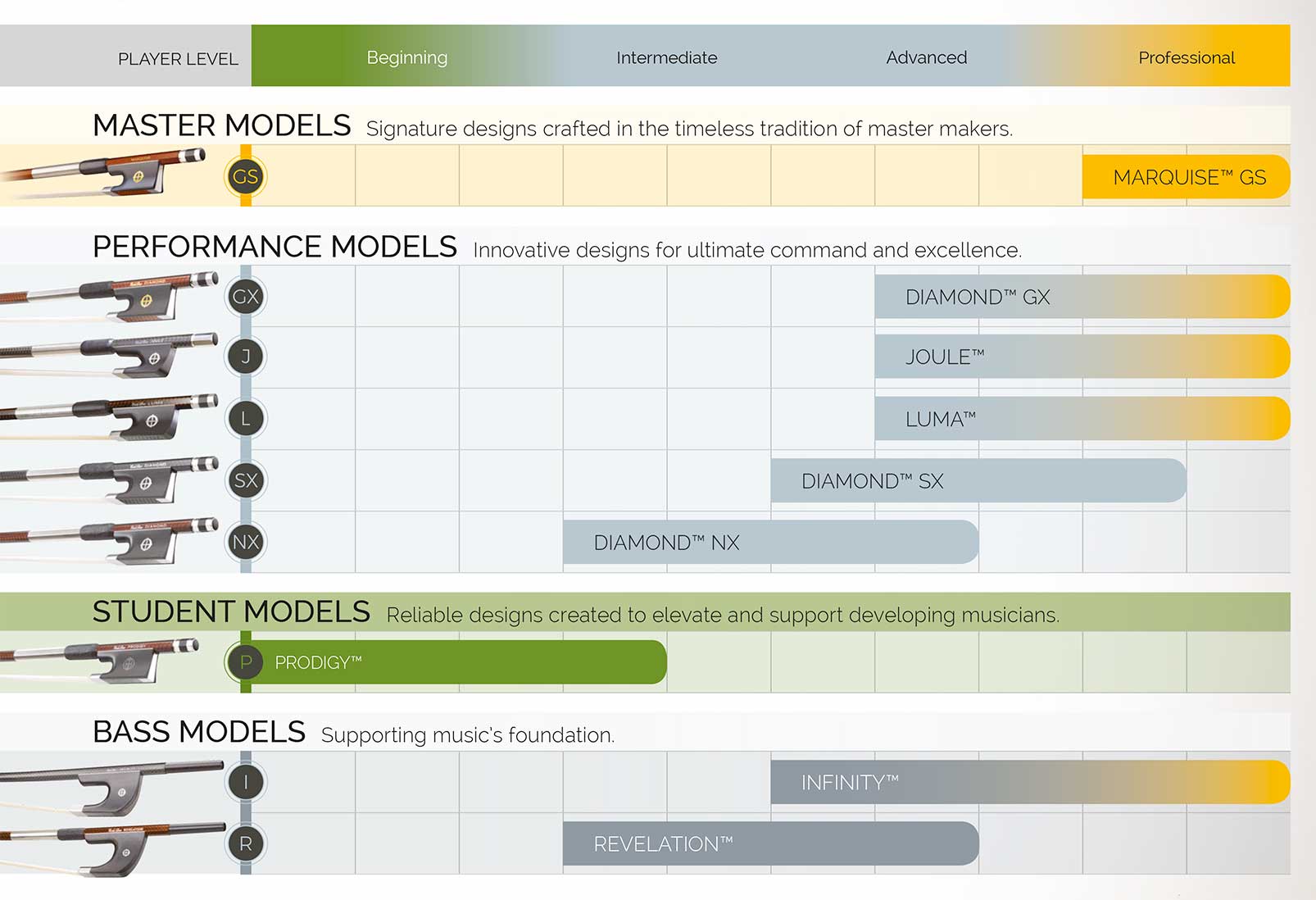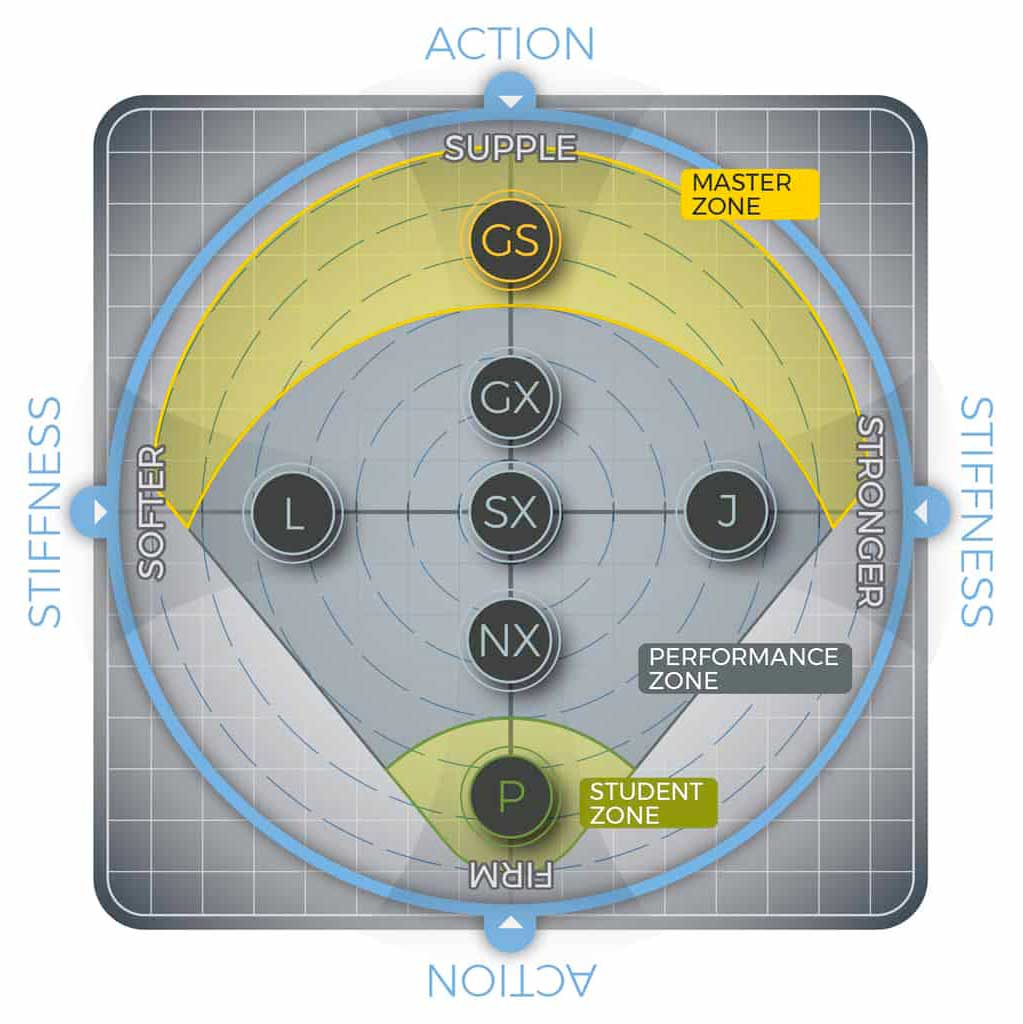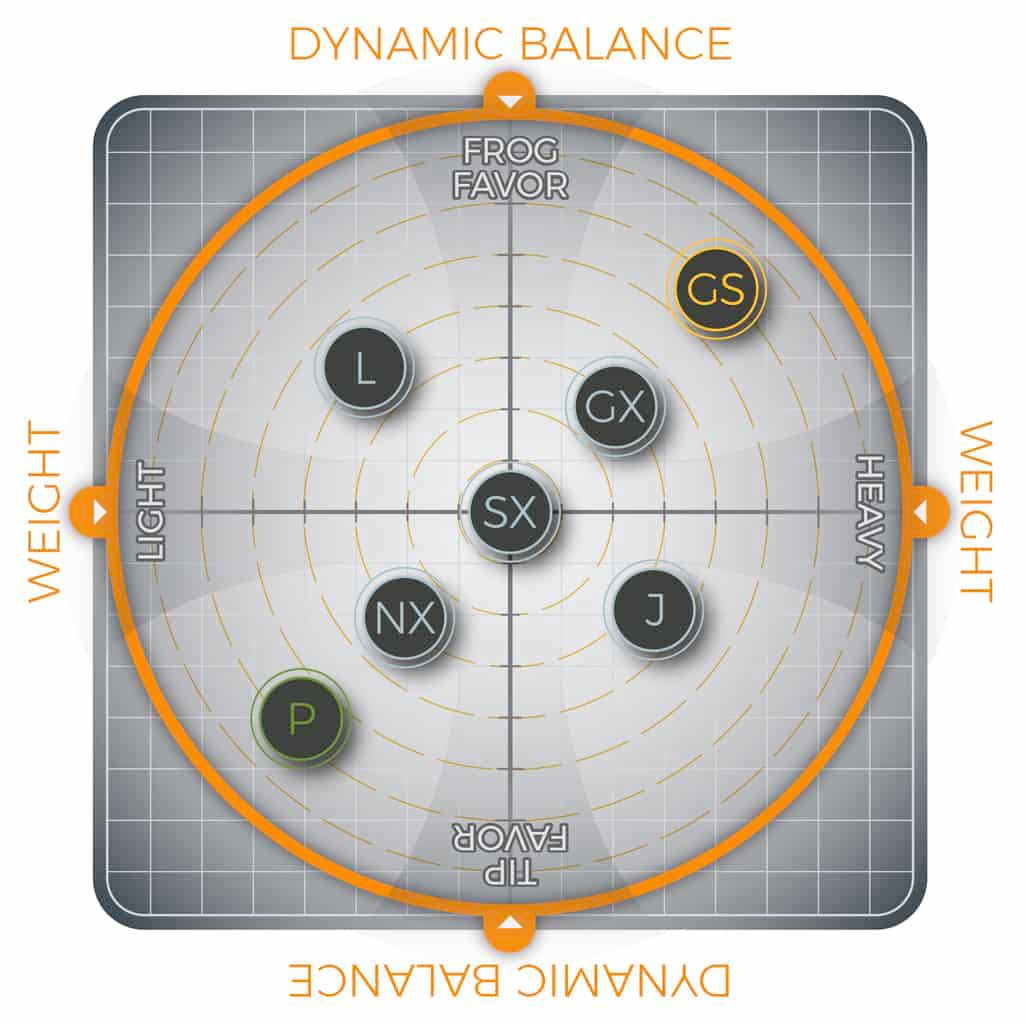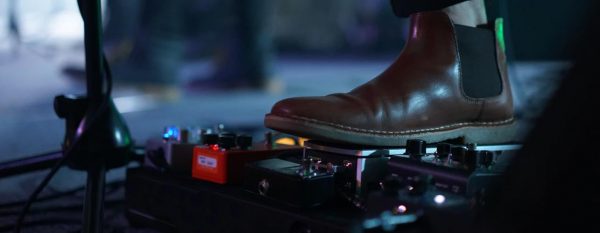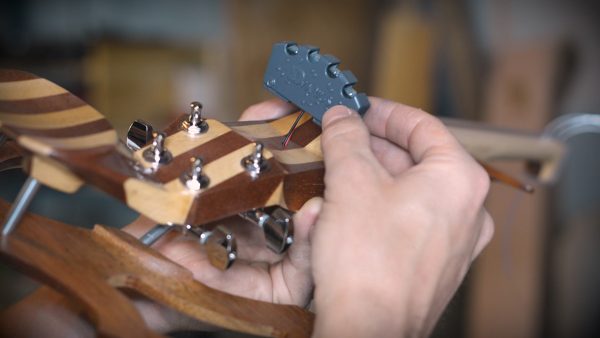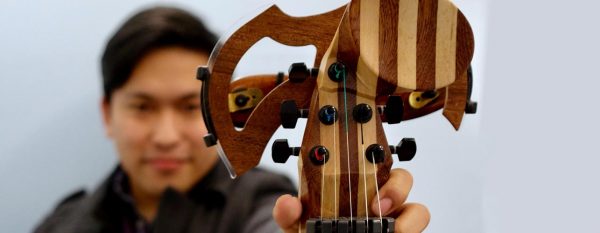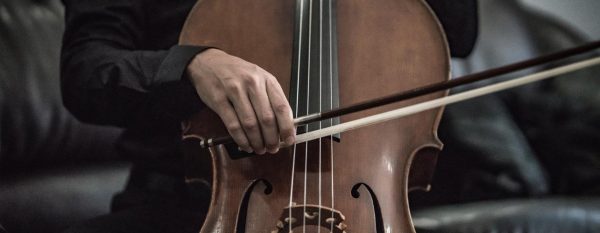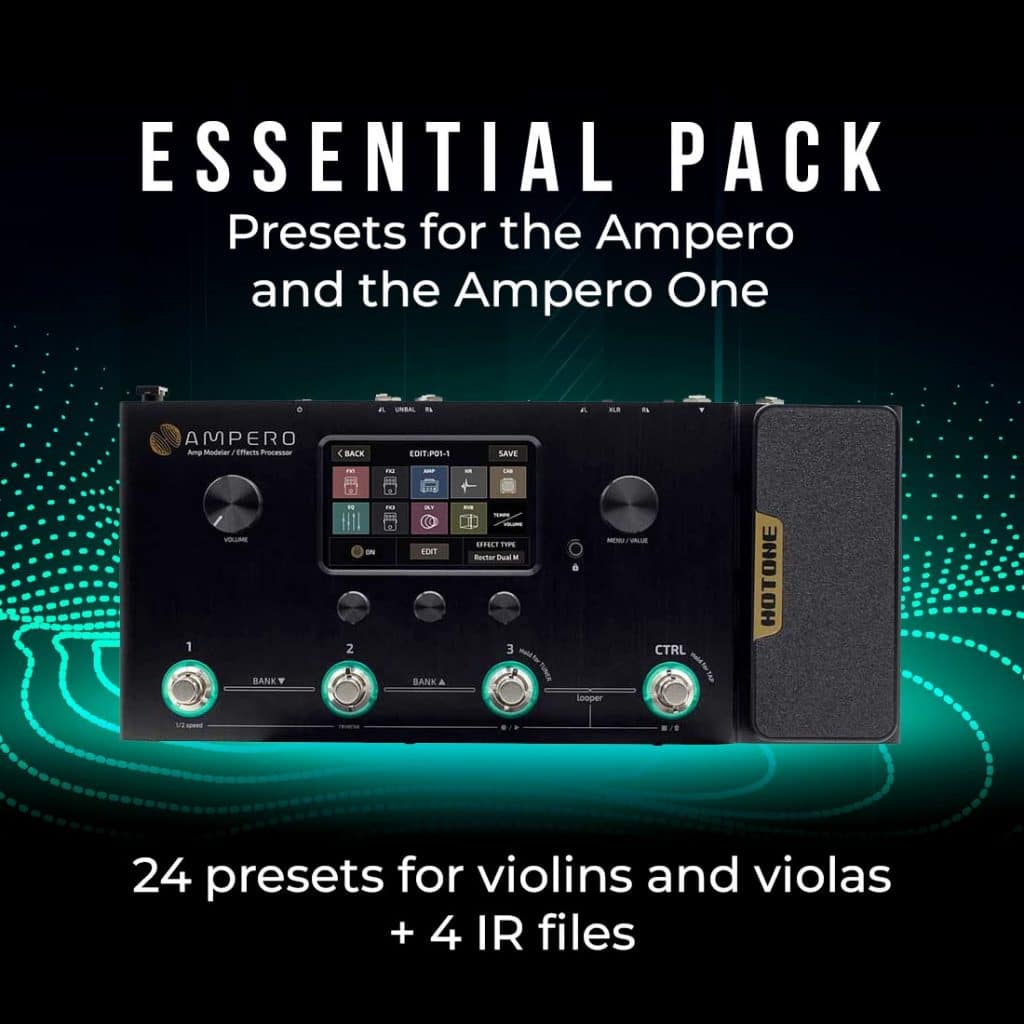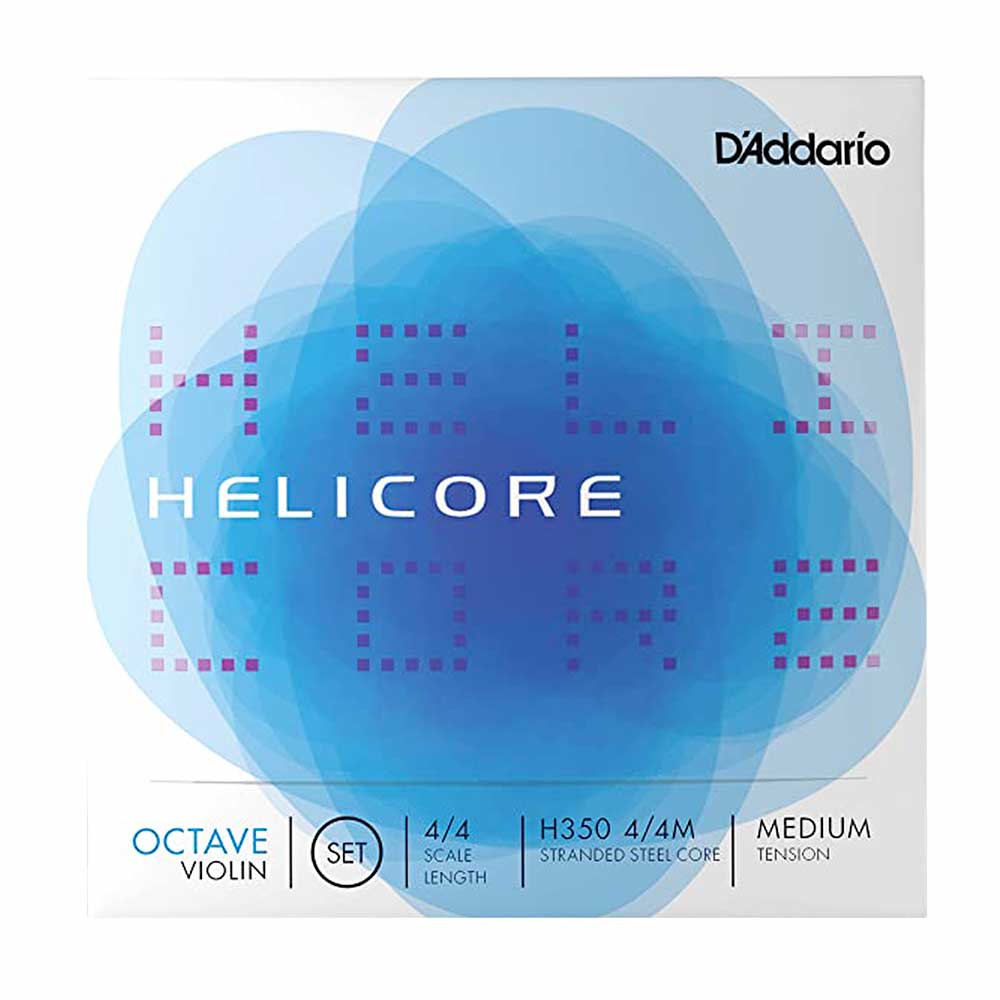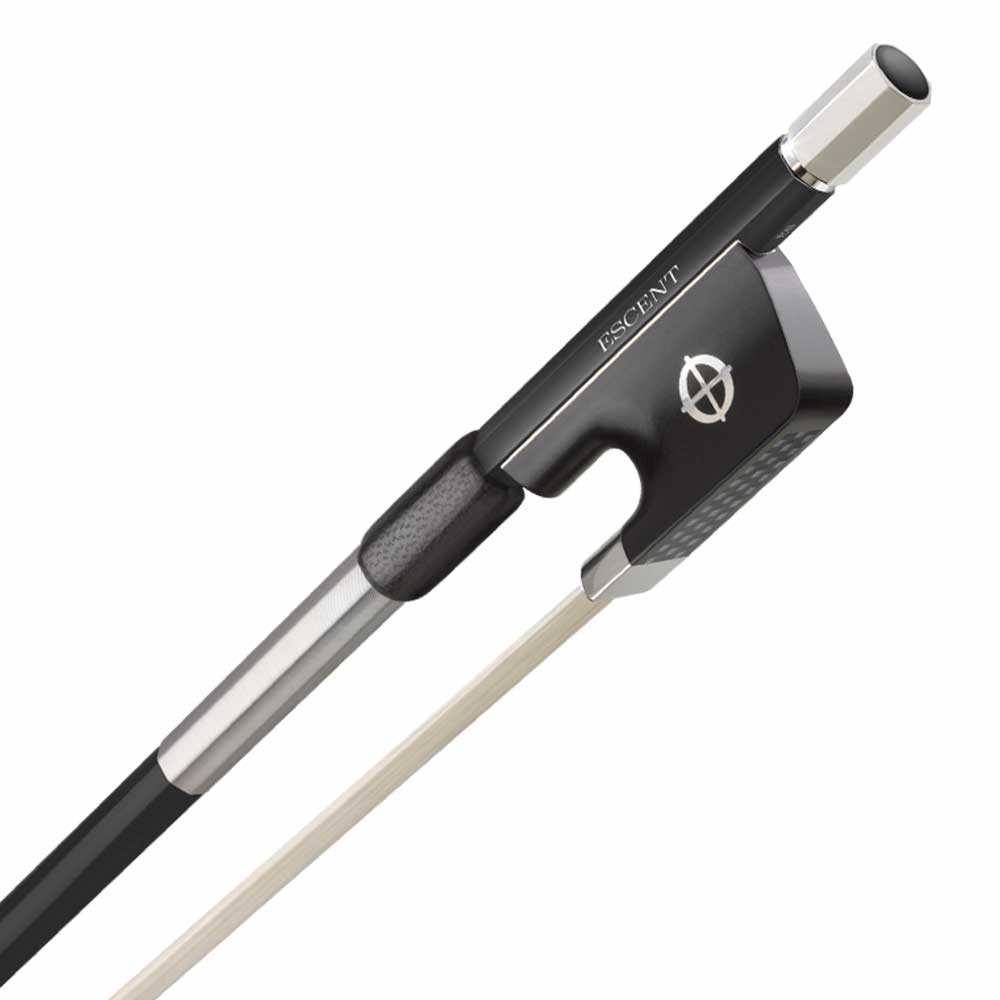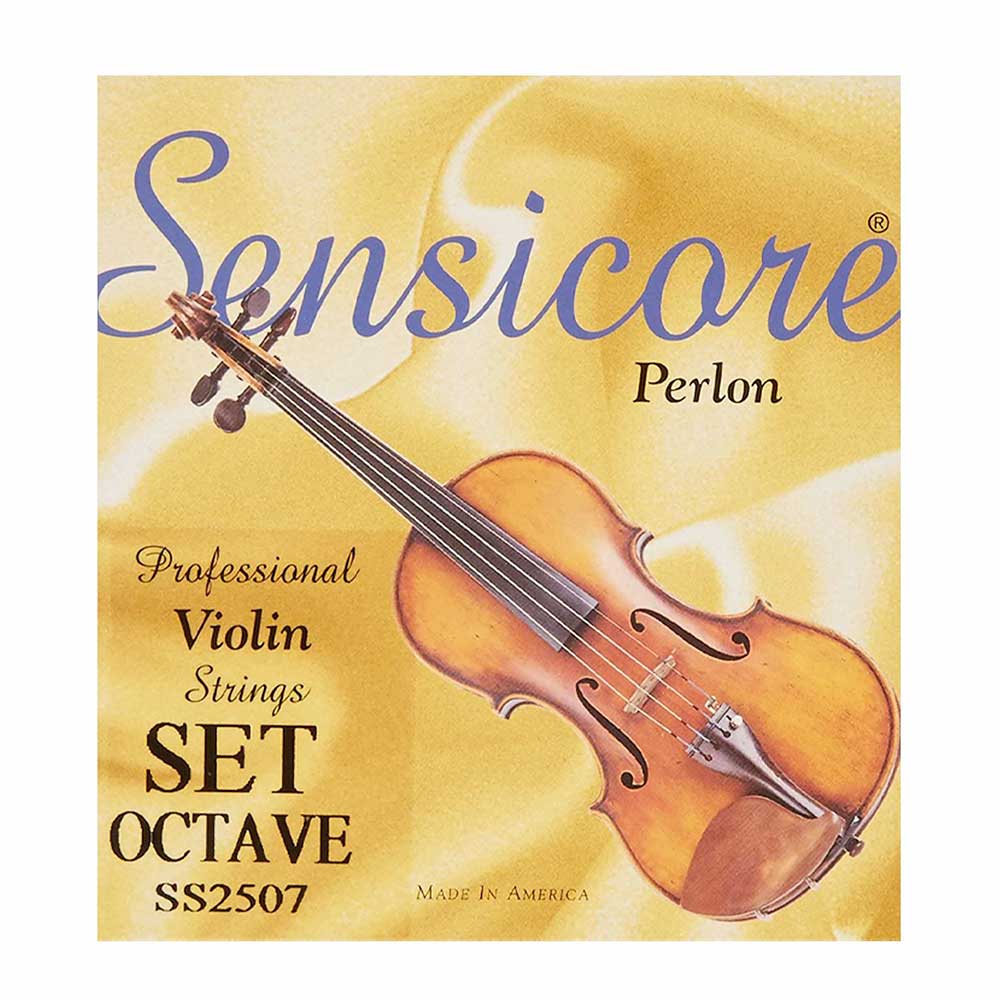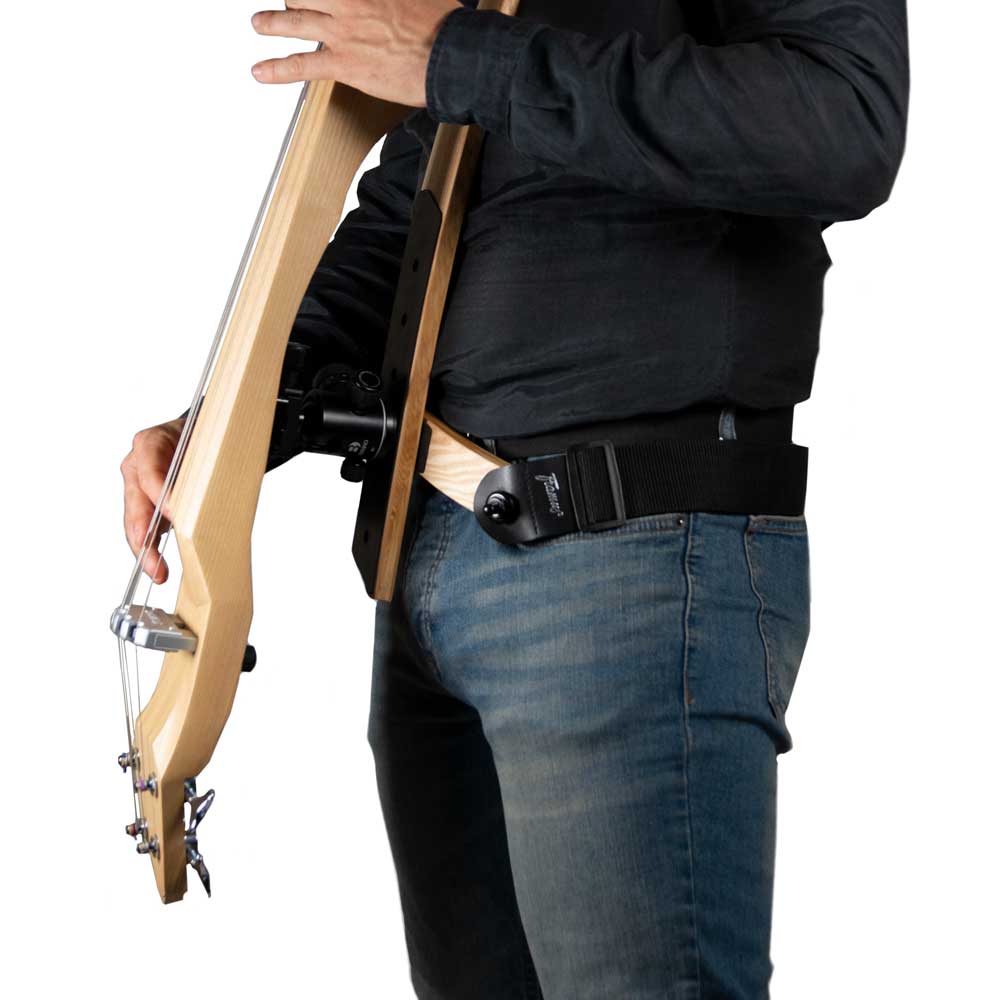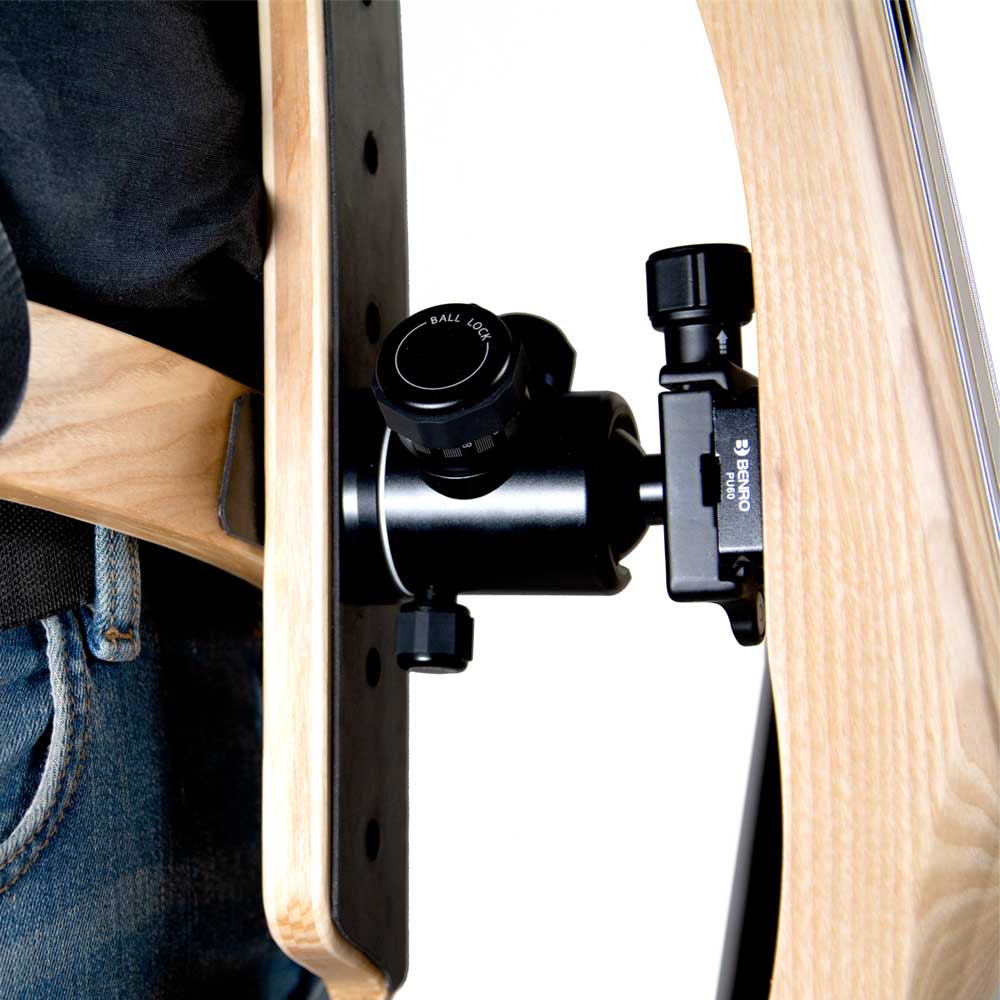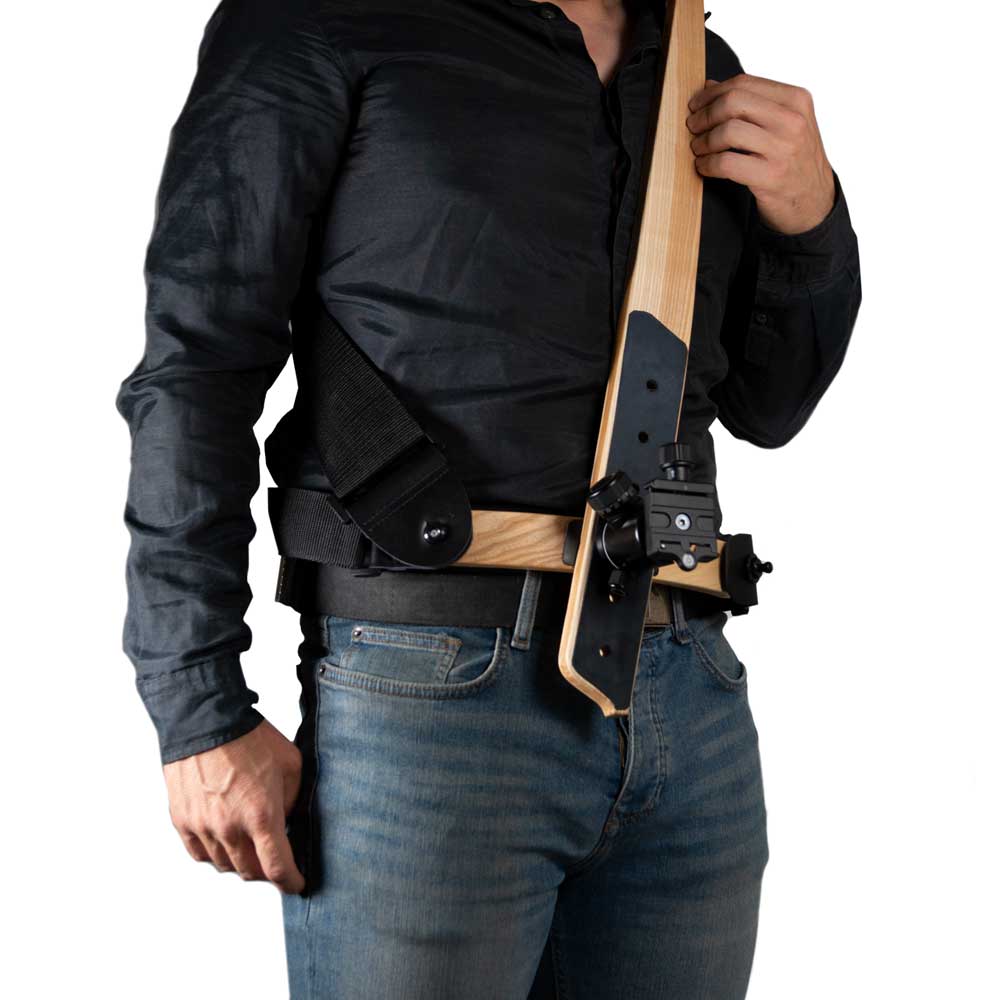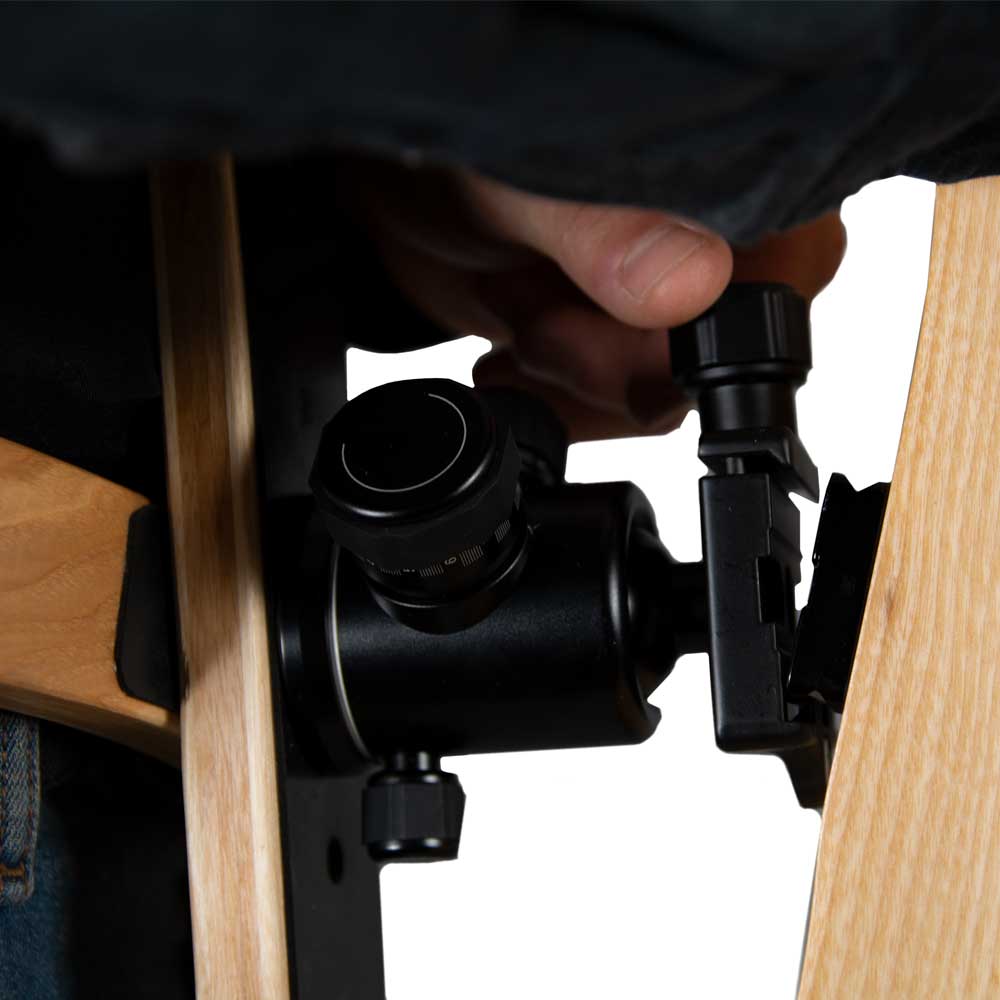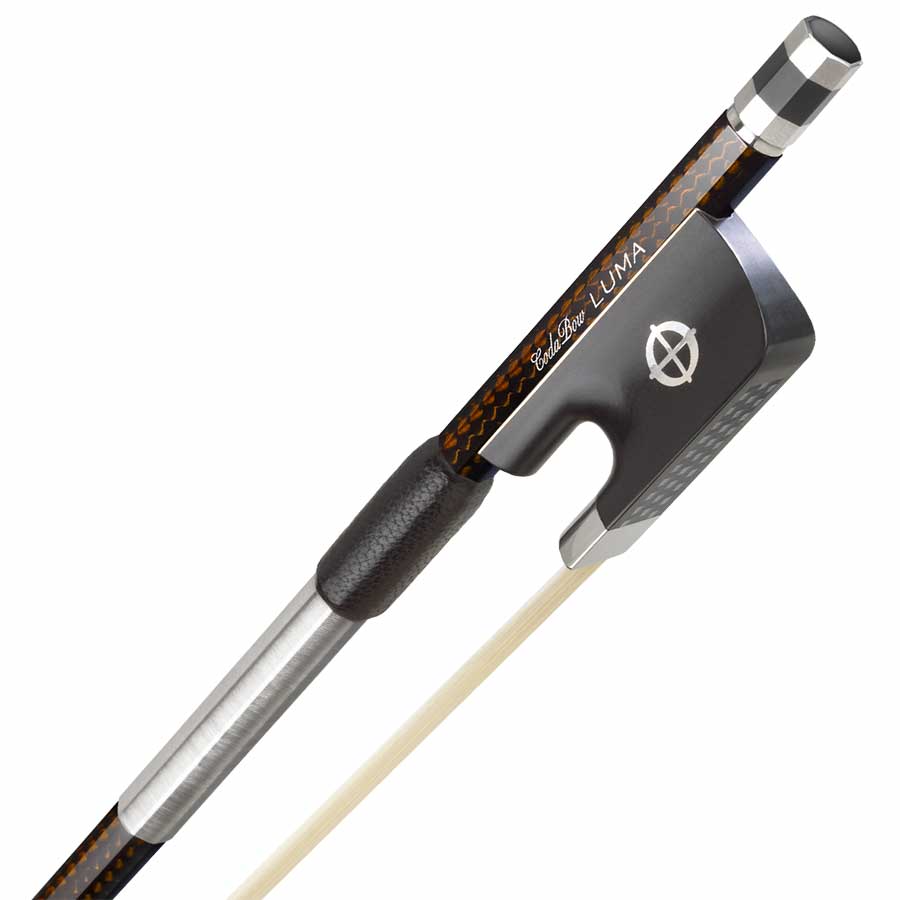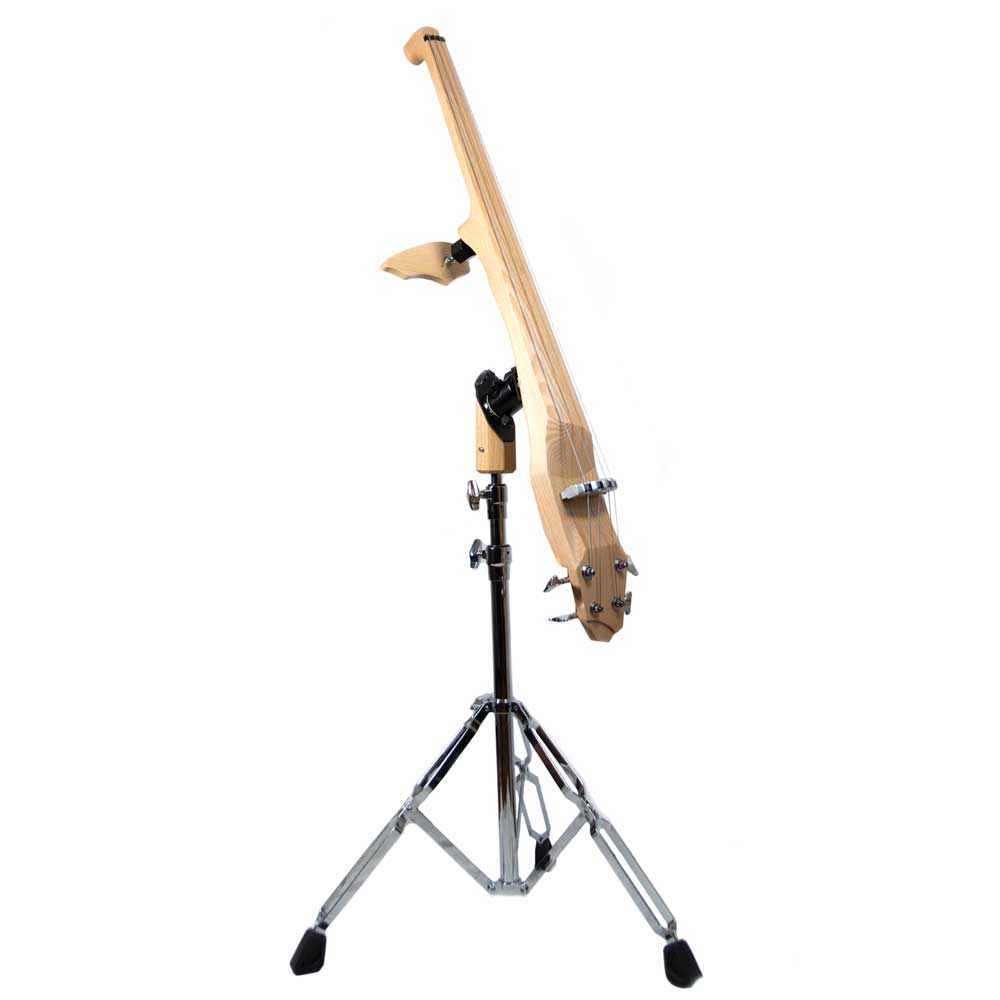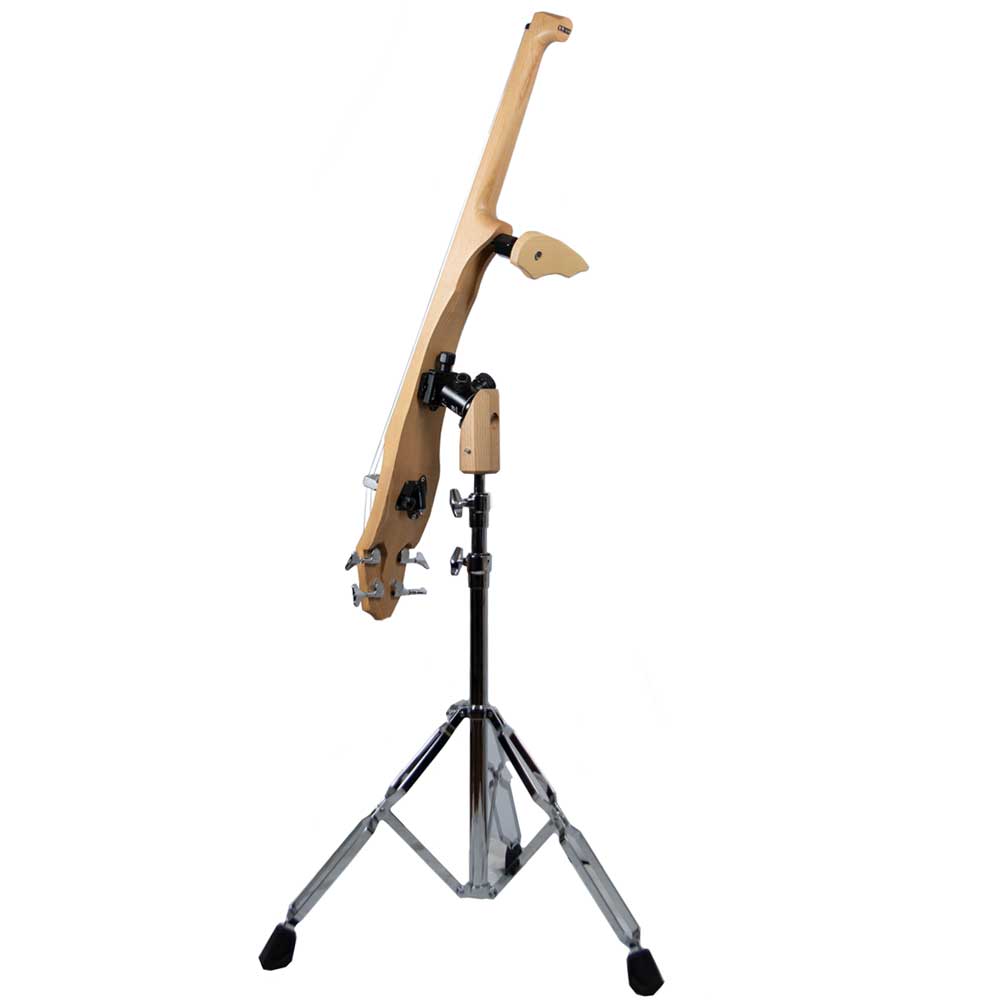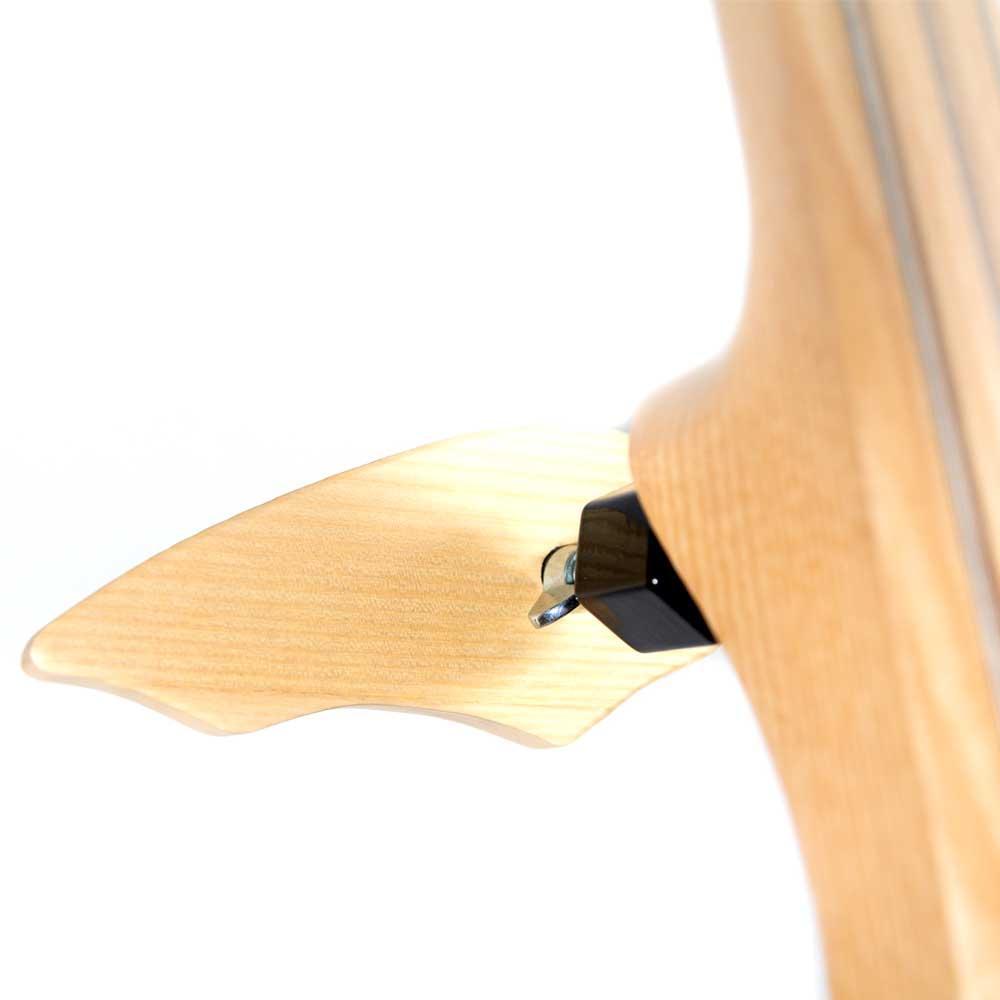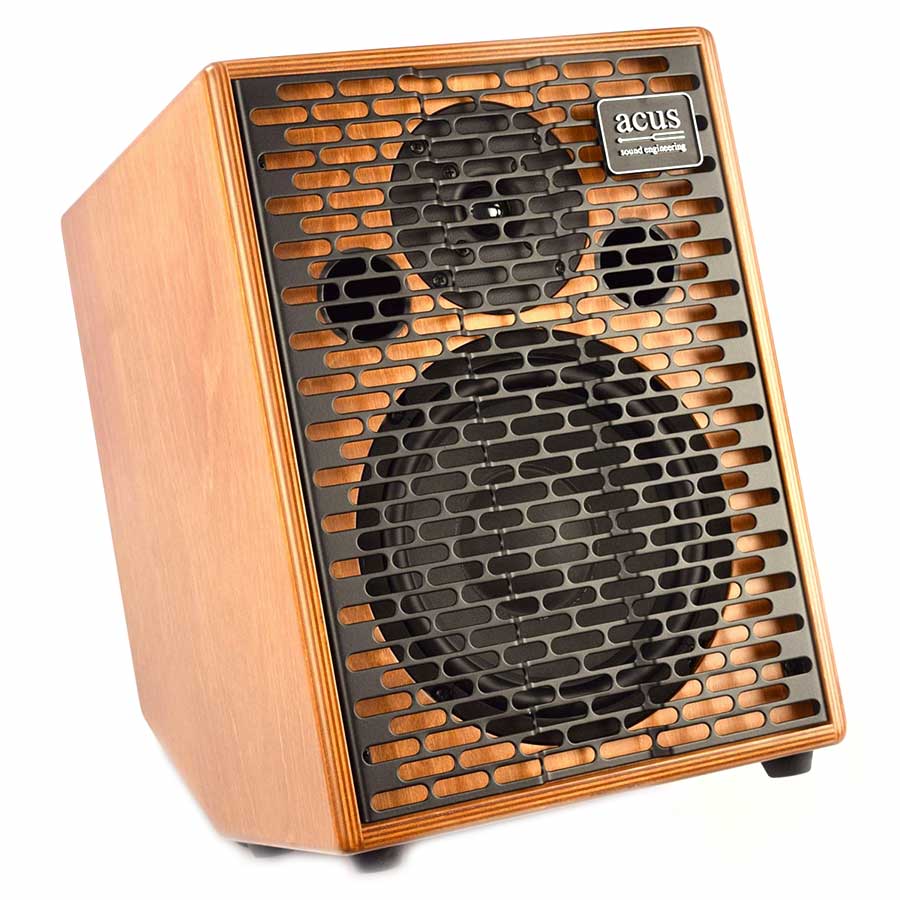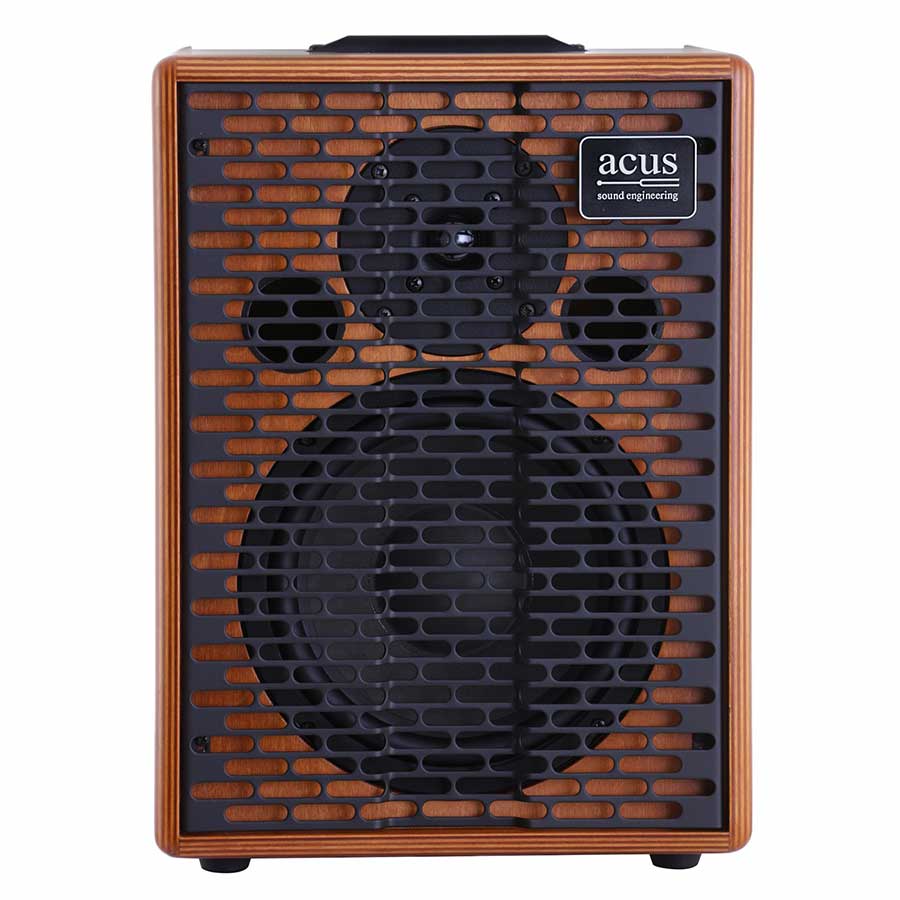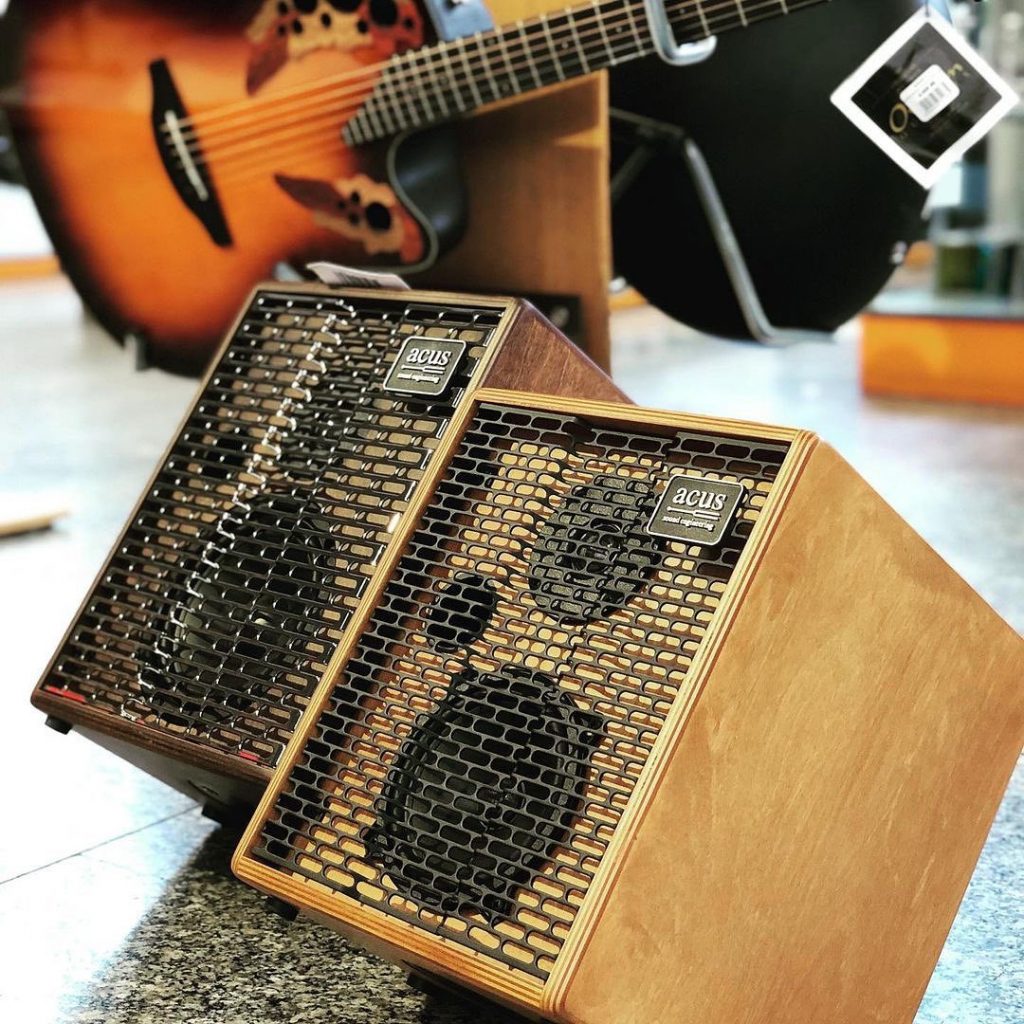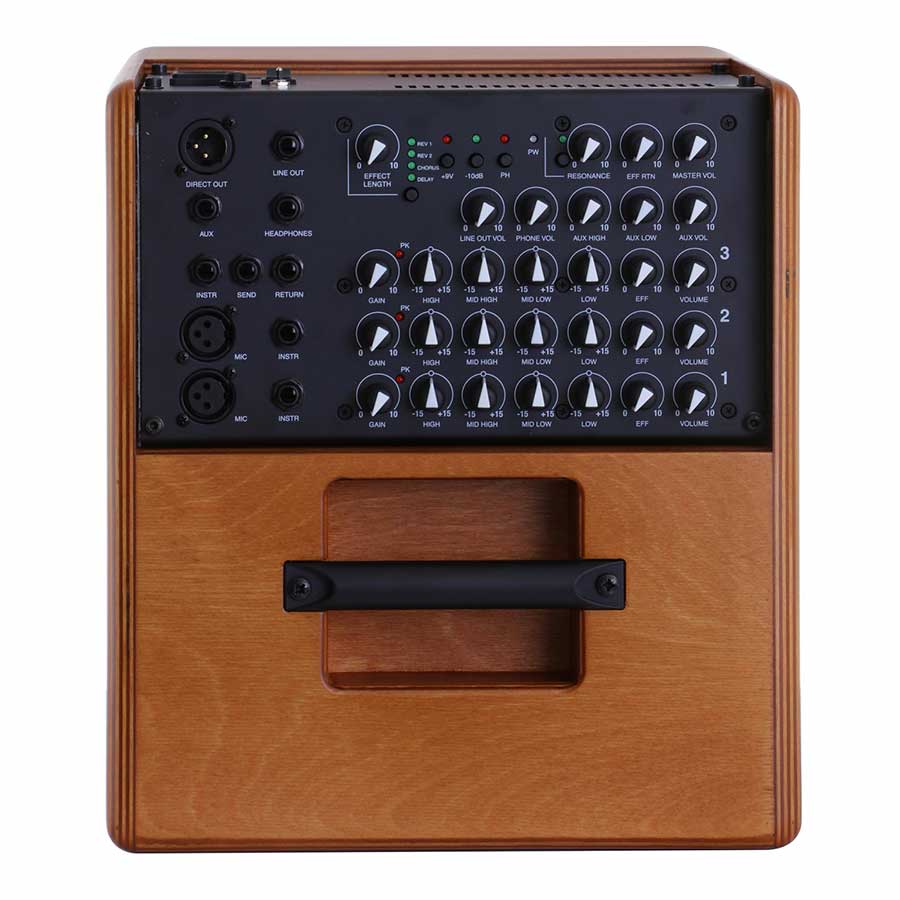The origin of carbon fiber bows
For centuries, bows have been made from Pernambuco wood. This Brazilian wood has physical properties that make it ideal for making bows for bowed string instruments. It is simultaneously strong, dense and flexible. Unfortunately, it has become a rare and expensive wood. The Brazilian agricultural deforestation is partly responsible for its scarcity. Pernambuco wood is now subject to severe export restrictions and is listed as an endangered species.
To mitigate this and protect pernambuco, alternative materials had to be found to replace it. Carbon fiber bows were born as a result of these massive restrictions. Carbon fiber is a synthetic material that shares many of the characteristics of Pernambuco, which is why it has been embraced by many musicians.
The advantages of a carbon fiber bow
Carbon fiber bows offer many advantages when compared to wooden bows. They are very resistant and require less maintenance. In fact, carbon fiber minimizes the deformation of the curve of the stick. Moreover, carbon fiber bows are completely immune to weather conditions. Unlike wood, carbon is not prone to alterations due to temperature and hygrometry (measurement of the humidity level in the air).
An additional noteworthy aspect of carbon fiber bows is their unbeatable value for money! You won’t find an equally good wooden bow for the same price as a carbon fiber bow. This price difference is explained by the scarcity of Pernambuco wood, the potential value of the wooden bow and the handcrafted work performed on the wooden bows by skilled bow makers.
The following are the advantages and disadvantages of carbon fiber bows.
The positive
> Very resistant (not to say unbreakable)
> Less maintenance
> Impervious to environmental factors
> Good value for money
> R&D by manufacturers in order to design bows that match each musician’s level and playing style
The negative
> No concept of value over time
> Less prestigious than a wooden bow
> Some bow makers may refuse to rehair carbon fiber bows
CodaBow’s Leitmotiv
CodaBow manufactures carbon fiber bows for all kinds of instrumentalists (violin, viola, cello and double bass) and all levels (from beginner to professional).
CodaBow bows for violin, viola and cello are available in seven different models intended for different levels and therefore different players. Two additional models are designed for double bass players. Each model has been designed to meet the needs of the instrumentalist at a given moment in his musical career or learning process and his playing style.
By working in partnership with teachers from conservatories and music academies, CodaBow has analyzed the bowing needs of each instrumentalist. As a result, the bow becomes an ally in the study of the instrument and its techniques. For example, the first bow techniques that violinists learn are legato, détaché or staccato (and not the more masterful sautillé or ricochet).
The manufacturer has therefore developed sticks that can improve the learning of these techniques by balancing the weight of the stick and increasing its stiffness.
This pedagogical approach to bow making allows players to have in their hands the most suitable bow for their level of progress.
Beyond this educational approach, CodaBow has gone a step further to satisfy the needs of the more experienced players as well. For these musicians, they have oriented their choices according to the type of instrument (acoustic/electric) and the music style (classical, folk, country, rock, etc.)
CodaBow models
Choosing a Codabow carbon fiber bow should be done according to your level or playing style. There are 7 models for viola, violin and cello:
- Prodigy (beginner level)
- Diamond NX, SX and GX (intermediate to professional level)
- Joule (advanced to professional level, intended for electric violinists, violists or cellists and an “aggressive” playing style)
- Luma (advanced to professional level, intended for fiddlers and their folk/country playing style)
- Marquise GS (professional level, intended for classical violinists)
And two models for double basses:
- Revelation (intermediate to advanced level)
- Infinity (advanced to professional level)
Let’s start by describing the main characteristics of these violin, viola and cello bows.
Prodigy
The Prodigy is the entry-level bow offered by CodaBow. It is intended for violinists who are just beginning to learn to play their instrument. It features a resistant carbon fiber bow, which is ideal for children. It will suit the youngest players. It is the only CodaBow that comes in 3/4 and 4/4 sizes.
The following bows are only available in 4/4.
Diamond NX, SX and GX models
This line is designed for intermediate to professional players. The objective is to offer a line that will adapt to you as you progress. The R&D of these bows has been focused on reproducing the characteristics and sound quality of high-end wooden bows, while taking into account the musician’s curriculum.
Below, a short review of the Diamond SX bow by Jonathan H. Warren
Joule
The Joule is slightly heavier than any other CodaBow. This heavier weight allows for a more powerful sound. This strategic choice is related to the main purpose of the Joule, which is to meet the needs of electric violinists, violists or cellists using instruments with more than 4 strings. The weight of the stick is designed to offer a balanced sound and responsiveness on all strings. This means that a few grams are added to the tip of the bow in order to improve the friction on the lowest strings, like the C string found on 5-string electric violins. The Joule has a very specific frog design called the “Turbo” design. It also increases the friction of the hair on the strings.
Luma
Unlike the Joule, the Luma is intended for players looking for a lighter, more flexible bow. It weighs a few grams less than the others. It was designed to meet the needs of fiddlers looking for great maneuverability. The Luma also has a special frog design called the Aero. It reduces the weight and improves the balance of the bow.
Marquise GS
And then there is the Marquise GS! It seduces the most demanding professional classical violinists. It is based on very high quality wooden bows and on traditional French bow making (cf. the research made by François Xavier Tourte). The Marquise GS combines all the advantages of a renowned wooden bow, but at a price that beats all competitors!
Last but not least, here are the two carbon fiber bows that have been specially designed for double basses.
Revelation
The Revelation carbon fiber bow for double bass is intended for intermediate level double bass players who are looking to improve their technique. Its weight distribution simplifies its stability in the hand and its friction on the strings. It uses a traditional shape and is recommended for orchestral performances.
Infinity
The Infinity is intended for professional double bass players. It is more flexible and slightly heavier than the Revelation, thereby expanding the sound possibilities. It is the preferred bow among soloists.
Choosing your CodaBow – Characteristics to differentiate between bows
When differentiating its bows, CodaBow refers to the skill level of the musician and to 4 characteristics: weight, balance, maneuverability and flexibility. This means 5 characteristics to which we should add the budget.
Maneuverability
Maneuverability is the most important factor. It represents the connection that exists between the player and the strings when they are rubbed by the bow. It is the place where the bow will flex. This characteristic is closely related to the curve of the stick.
In a carbon fiber bow, the curve depends on the shape given to the stick by the quantity and orientation of the carbon fibers.
CodaBow calls this factor ACTION and evaluates its bows using two axes: the bows called firm (FIRM ACTION) and the bows called supple (SUPPLE ACTION).
In the center of the axis we find the bows with average maneuverability. They are the middle ground between firmness and suppleness.
| For violins, violas and cellos | |
| Bow name | Maneuverability |
| Prodigy | Firm |
| NX | Firm to medium |
| SX | Medium |
| GX | Medium |
| Joule | Medium |
| Luma | Medium |
| Marquise GS | Supple |
| For upright basses | |
| Bow name | Maneuverability |
| Infinity | Medium to supple |
| Revelation | Medium |
A few explanations are necessary to understand the importance of maneuverability.
The firmer the bow, the stiffer it is and the stronger its connection with the strings will be. Bows that are considered firm are intended for beginners in order to facilitate the execution of the bowing techniques. Also note that the firmer the stick, the more bounce you can get, which is ideal for certain styles of rock and folk music.
Conversely, the suppler the bow, the lighter and more sensitive its connection with the strings will be. Suppleness expands the possibilities of sound nuances and therefore the playing spectrum. However, a supple bow requires great skill and technique on the part of the musician, as they are more difficult to handle. Suppler bows are especially intended for classical music players.
Stiffness
This characteristic refers to the effort required by the player to use his bow. It represents the resistance felt by the player when rubbing the strings.
CodaBow calls this characteristic STIFFNESS and classifies its bows on an axis ranging from SOFTER to STRONGER.
The higher the stiffness, the more stable and easier to play the bow is, and the greater the effort required by the player to push the bow up and down. A higher stiffness is ideal for beginners.
A high level of stiffness also means more string friction. This is an advantage for beginners and for violins with more than 4 strings, like is the case with many electric violins.
The suppler the rigidity, the lighter and more controlled the playing will be, which requires a moderate pressure on the strings. The bow is therefore more difficult to handle. On the other hand, there is less effort required. This suppleness is not recommended for beginners, and is best suited for experienced musicians.
The importance of the stiffness can also be explained by the tension of the bow. The stiffer the bow, the tighter you can tension the hair, which increases bow bounce, but limits the nuances of sound. On the other hand, the suppler a bow is, the less tension is applied to the hair. This allows for a greater number of movements and pressure, and broadens the spectrum of nuances.
| For violins, violas and cellos | |
| Bow name | Stiffness |
| Prodigy | Stronger |
| NX | Medium to softer |
| SX | Medium |
| GX | Medium |
| Joule | Medium to stronger |
| Luma | Softer to medium |
| Marquise GS | Softer to medium |
| For upright basses | |
| Bow name | Stiffness |
| Infinity | Medium |
| Revelation | Medium to supple |
Weight
To some extent, the weight of a bow affects the comfort and efficiency with which the player will play the notes. There are certain standards that determine the ideal weight of a bow. Typically, a wooden violin bow weighs about 60 grams, a viola bow weighs about 70 grams, a cello bow weighs 80 grams and a double bass bow weighs 135 grams.
Some professional players prefer a bow that is a few grams lighter for better handling.
Whereas for a beginner, it is better to choose a basic weight to simplify the holding of the bow.
This is certainly the least important characteristic, as it is pretty much standardized. Each manufacturer and bow maker try to respect the reference weights of the bows.
Codabow classifies its bows on an axis called WEIGHT going from LIGHT to HEAVY.
| For violins, violas and cellos | |
| Bow name | Weight |
| Prodigy | Light to medium |
| NX | Light to medium |
| SX | Medium |
| GX | Medium |
| Joule | Medium to heavy |
| Luma | Light to medium |
| Marquise GS | Medium to heavy |
| For upright basses | |
| Bow name | Weight |
| Infinity | Medium to heavy |
| Revelation | Medium |
For the record, the term “medium” refers to the “standards” defined for high-end wooden bows.
Balance
This characteristic refers to the way the stick is held in the right hand while the musician is using it. It is essential for the comfort of the player. It is linked to the shape of the bow’s frog. CodaBow grades its carbon fiber bows on an axis called DYNAMIC BALANCE ranging from FROG-FAVORED to TIP-FAVORED.
Players who want stability, a good grip and a strong contact with the strings will prefer the TIP-FAVORED balance. Players who want good responsiveness, noticeable tonal nuances and technical bow control will prefer the FROG-FAVORED balance.
| For violins, violas and cellos | |
| Bow name | Balance |
| Prodigy | Centered to tip |
| NX | Centered to tip |
| SX | Centered |
| GX | Centered to frog |
| Joule | Centered to tip |
| Luma | Centered to frog |
| Marquise GS | Centered to frog |
| For upright basses | |
| Bow name | Balance |
| Infinity | Centered to tip |
| Revelation | Centered |
Level
Please check out our paragraph about the pedagogical approach initiated by Codabow to make of the bow a true companion on the road.
| For violins, violas and cellos | |
| Bow name | Level |
| Prodigy | Beginner |
| NX | Intermediate |
| SX | Intermediate to advanced |
| GX | Advanced to professional |
| Joule | Advanced to professional |
| Luma | Advanced to professional |
| Marquise GS | Professional |
| For upright basses | |
| Bow name | Level |
| Infinity | Advanced to professional |
| Revelation | Intermediate to advanced< |
Budget
Your budget also defines your ability to purchase. Prices vary depending on the import taxes and VAT rates that apply in your country of residence. However, here is the classification of each bow according to its cost in ascending order.
The classification for violin, viola and cello bows:
- Prodigy
- NX
- SX
- Joule and Luma
- GX
- Marquise
And the classification for double bass bows:
- Revelation
- Infinity
Which bow? For which player?
Here is what we recommend to players who want to choose a carbon fiber bow.
For children
If you’re looking for a carbon fiber bow for a child learning a new instrument, the Prodigy will meet most beginner needs. Keep in mind that it is the only CodaBow available in 3/4. Later, when the learning process is well advanced and the 3/4 size becomes insufficient, it may be interesting to switch to a Diamond NX.
For adults
Everything will depend your skill level and expectations!
For electric violinists, there is no doubt that the Joule is ideal. Especially if you use an electric violin with more than 4 strings! The Diamond NX or SX are an excellent alternative.
If you play both classical music and a variety of musical styles (rock, pop, country, etc.), we highly recommend the Diamond GX. It will meet all your needs!
For classical violinists, violists or cellists, you will want to choose between the Luma (the lightest of them all), the Diamond GX or the Marquise GS.
For folk music enthusiasts, the Luma is the best choice. However, its lightness will not be the best match for every musician. If you like having a good grip on the bow, and if the heaviness of the bow plays a role in your playing style, then the Diamond GX might be a better choice.
For double bass players, the choice is limited since there are only two possibilities. We believe that your skill level should be the deciding factor between the Infinity and the Revelation. The balance and flexibility of the Infinity requires a perfect mastery of the bowing techniques.
Sources and images: Codabow and 3Dvarius

